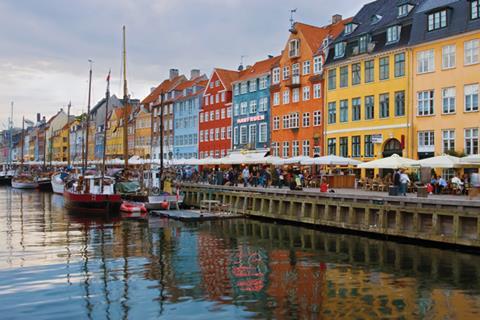Innovative thinking may be difficult to turn on at will, but there are many ways to prepare for inspiration, says Mark Peplow

In late 1922, Wolfgang Pauli took an aimless stroll through Copenhagen’s beautiful streets, deep in thought. Presently, the Austrian physicist met a colleague who remarked in a friendly manner, ‘You look very unhappy.’ Pauli answered fiercely: ‘How can one look happy when he is thinking about the anomalous Zeeman effect?’ How indeed?
Pauli recalled the episode shortly after winning the Nobel prize in physics in 1945 for his formulation of the exclusion principle: each electron in an atom must occupy a unique quantum state. Although he didn’t know it as he wandered around Copenhagen, struggling to explain how magnetic fields split atomic spectra, Pauli was unwittingly laying the foundations for his greatest insight.
The tale crops up in many histories of quantum physics, but it was new to me when I heard it retold at the Euroscience Open Forum (ESOF) in June – held, appropriately enough, in Copenhagen – at a session on creativity in science. What is creativity, wondered the panel, and can it be willed?
In Pauli’s case, his frustration with the anomalous Zeeman effect drove him to focus on the problem with great intensity. That singularity of purpose – sometimes to the detriment of social niceties – seems to spur creativity in all fields.
But obsession is not the only route to creative thinking. There are many ways to engineer our circumstances, or alter our modes of thinking, to achieve fresh insights.
Free your mind…
Freeing ourselves of distractions can help to sharpen our attention, allowing our ruminations to flow unhindered without breaks of concentration. And when our minds wander in such peaceful isolation, they often return with surprising thoughts – good ideas seem to spring unbidden into our minds during a shower, or, like Pauli, on a long walk. Psychology studies have even found that spending time in natural settings with direct sunlight spurred students to create more innovative collages than those trapped in drab classrooms, for example.1
This last also hints that solitude itself is not inherently helpful – starved of stimuli, our minds can stagnate. And so creativity may also flourish in crowds – Copenhagen in the 1920s was a crucible for the greatest minds in physics; Pauli’s immersion in a collaborative community that challenged established ideas brought alternative viewpoints and intellectual nourishment.
Pauli was trying to explain an observation, and although he is rightly praised for his creativity in solving the problem, we must remember that the creative process begins with the problem itself – good questions are just as valuable as their answers. So while creative thinking must be underpinned by knowledge, true innovation often springs from defining new problems.
Albert Einstein and Leopold Infeld summed it up well in The evolution of physics: ‘The formulation of a problem is often more essential than its solution … to raise new questions, new possibilities, to regard old problems from a new angle, requires creative imagination and marks real advance in science.’
But how do we persuade ourselves to dream up these incisive questions? It can be difficult for those schooled in the rules and boundaries of a field, whose familiarity with a concept might blind them to flaws in their understanding. One solution is to talk to a child – engaging with a bright young mind can raise unexpected questions about the things we thought we understood.
We can also encourage that creative naïvety in ourselves by venturing out of our intellectual comfort zone. Embarking on a new area of study, unfettered by preconceptions about the field, can sometimes deliver remarkable insights. Just think of Andre Geim’s ‘Friday night experiments’, which the University of Manchester physicist uses to try out left-field ideas. ‘99 times out of 100, you do not succeed,’ he says, ‘but sometimes there are very simple experiments and very simple discoveries to be made.’ One of those discoveries was graphene, which snagged Geim and his colleague Konstantin Novoselov a Nobel prize in 2004.
Getting some distance can also be fruitful. In 2009, psychologists found that we answer questions that are connected to far away locations more easily than those linked to our home towns.2 Temporal distance has a similar effect: an earlier study showed that people develop more innovative solutions to problems associated with the distant future than those linked to tomorrow.3 The lesson is that thinking about problems in an abstract way can allow us to approach them more creatively.
…and the rest will follow
The ESOF panel also noted that it is much easier to kill creativity than to induce it, an observation demonstrated all too effectively by our education systems. Deviating from mainstream thinking is rarely promoted in schools, but educators must allow students to think freely and independently, without the fear of being ridiculed for making errors. Too often, science teaching presents science as a body of knowledge to be learned and regurgitated, rather than an inherently creative process of discovering new problems, and having the courage to imagine what the answers might be.
Perhaps we cannot will creativity, but we can stimulate and nourish it – through broad learning, by giving our minds the freedom to roam and by remaining alert to the endless depths of unsolved mysteries in the universe.












No comments yet